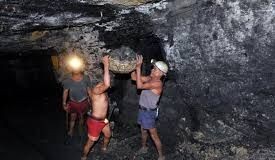R N Bhaskar
29 June 2015
Australia is in the final stages of concluding a Comprehensive Economic Cooperation Agreement (CECA) with India. It also hopes to enter into a nuclear fuel supply agreement with India (Australia is the third largest producer of uranium in the world after Russia and Canada). Moreover, it has just introduced a “New Colombo Plan” for education which envisages AUS$100 million of funding towards scholarships 2013-2014 and 2017-2018 for students from the Indo-Pacific region.
For Australia, the CECA is important, as is education. Especially because the coming years could be tough for that country.
Problem #1: New centres for higher learning have begun to compete with Australia. Singapore, for instance, has stepped up its offerings. China too has begun to attract the attention of Indian students. Unlike Russia, China’s key universities offer courses in the English language, though both offer excellent quality courses that cost a fraction of what Australian universities charge. Not surprisingly, the number of foreign students opting for higher studies to China, even from India, has been increasing year after year.
Problem #2: China’s economy has slowed down. When China was buying, commodity prices zoomed. Miners made money. Now the slowdown is hurting these very mining sectors.
Problem #3: Many of Australia’s future sources of revenue could shrivel. The plans looked good in September 2013 when Australia looked formidable. True, it had a current account deficit that was 3.3% of GDP, and an external debt that was almost 90% of GDP. But that did not worry anyone because much of the debt had gone towards building capacities in one of the most lucrative areas — liquefied natural gas or LNG.
Then the bottom fell out. Gas prices began tumbling. Many of Australia’s LNG facilities were being built with the price expectation of around US$14 per mmbtu (million metric British thermal units). This pricing seems outrageous today. For the past year, gas prices at Henry Hub — where much of the gas consumed in the US gets traded — have hovered under $3/mmbtu. A new generation of batteries and renewable energy could add to LNG’s headaches.
Already, Japan which paid $17/mmbtu has now begun importing it at under $8. Since $4-5 goes towards liquefaction and shipping, the actual price could have been just around $4.
Two factors helped Japan. One was Prime Minister Shinzo Abe’s decision to stop canalising imports through Orix of Japan (now a government committee negotiates such deals more effectively). The second was, obviously, the shale gas boom.
Japan is crucial for Australia because over 80% of Australia’s LNG goes there. As the table alongside shows, the fall in gas prices could shave off $9 billion of current income, and another $22 billion of future income, totalling over $30 billion (or 10% of Australia’s exports) annually. Australia was confident that it would become the world’s largest LNG exporter. Now those ambitious forays have begun to hurt.
Equally worrying is the fact that Australia remains a very high cost economy. A look at the combined cost of gas production, liquefaction and shipping confirms this.
It costs Malaysia just US$6.75/mmbtu to export LNG to Japan; the cost would be $ 8 for the US (Sabine Pass), and $9.15 for Indonesia (Senkang LNG). In sharp contrast, the cost for Australia would be at least $10.18 (Gorgon), but could be even higher at $11.71 (Australia East, APLNG). And this when Japan already gets LNG at under $8.
Australia’s pains could get worse unless the government decides to bail the industry out with subsidies and/or reduced royalties. Unless, of course, the commodity markets revive — especially for fossil fuels.
Similarly, the coal industry is facing its own set of problems. Low prices for coal, higher costs of mining, and the cost of battling environmentalists have even compelled the Adani group to stop further investments in Australia.
Mining, for Australia, is critically important. The resources sector represents almost 20% of the Australia stock exchange capitalisation, and almost one-third of the companies listed (though in terms of employment, this sector accounted for just 2.2% of the workforce). The mining sector accounts for 6% of Australia’s GDP, but mineral exports account for almost 35% of exports. And LNG was meant to be a rising star.
Clearly, 2015 will be a year of hard choices for Australia. It has lost markets, has lost price advantage. Now it must compete with Qatar, Russia and Canada, key suppliers of resources to India.
Market access to this country could help Australia in no small measure.
That is why the CECA becomes immensely important. It could revive uranium mining and also provide for some business to its services sector which accounts for almost 70% of GDP and 75% of jobs.
The author is consulting editor with DNA.
Read the original article here.
Click here for more India and its policies.





































COMMENTS